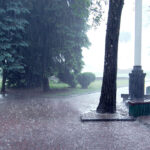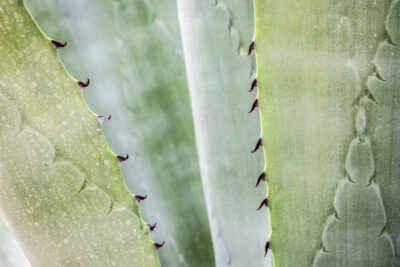
Can Frozen Succulents Bounce Back After Suffering Cold Damage?

Succulents are a popular choice for both indoor and outdoor gardening due to their unique and attractive appearance, as well as their ability to withstand dry conditions. However, one of the biggest challenges for succulent owners is protecting their plants from extreme temperatures, particularly freezing cold. When succulents are exposed to freezing temperatures, they can suffer cold damage, which can lead to wilting, discoloration, and even death. But can these frozen succulents bounce back and recover from such damage?
We will explore the effects of freezing temperatures on succulents and whether or not they can recover from cold damage. We will delve into the mechanisms that succulents use to survive in extreme conditions and how these mechanisms are affected by freezing temperatures. Additionally, we will provide tips and strategies for preventing cold damage to your succulents and steps you can take to help them recover if they do experience freezing temperatures. So if you're a succulent enthusiast or looking to add these resilient plants to your collection, keep reading to learn all about how to protect and revive your frozen succulents.
- Yes, frozen succulents can bounce back after suffering cold damage
- One way to help frozen succulents recover is by bringing them indoors
- Providing a warm and sheltered environment can aid in their revival
- It is important to gradually reintroduce frozen succulents to sunlight
- Proper watering and drainage are crucial for their recovery
- Pruning damaged parts can help stimulate new growth
- Applying a balanced fertilizer can support their recovery process
- Patience is key as it may take some time for frozen succulents to fully bounce back
- Regular monitoring and care will promote their overall health and rejuvenation
- Frequently Asked Questions
Yes, frozen succulents can bounce back after suffering cold damage
Many succulent lovers may find themselves in a panic when they discover that their beloved plants have been exposed to freezing temperatures. The fear of irreversible damage and potential loss can be overwhelming. However, the good news is that frozen succulents can indeed bounce back after suffering cold damage.
Understanding Cold Damage in Succulents
Succulents are known for their ability to withstand drought and thrive in arid conditions. However, they are not as resilient when it comes to extreme cold. When exposed to freezing temperatures, succulents can experience a variety of cold damage symptoms.
Common signs of cold damage in succulents include:
 Reviving Dead Succulent Roots: A Step-by-Step Guide to Restore Health
Reviving Dead Succulent Roots: A Step-by-Step Guide to Restore Health- Discoloration: Leaves may turn brown, black, or become translucent.
- Soft or mushy texture: The affected parts of the plant may feel squishy or spongy.
- Cellular damage: The cells within the succulent may rupture or burst.
- Wilting or drooping: The plant may lose its turgidity and appear limp.
Steps to Help Frozen Succulents Recover
If your succulents have suffered cold damage, don't lose hope just yet. With proper care and attention, they can bounce back and regain their former glory. Here are some steps you can take to help your frozen succulents recover:
- Assess the damage: Carefully examine your succulents to determine the extent of the cold damage. Remove any severely damaged or dead portions of the plant.
- Provide warmth: Place your succulents in a warm and well-lit area. Avoid exposing them to direct sunlight, as it can further stress the plants.
- Adjust watering: Succulents should not be watered immediately after cold damage. Wait until the soil has completely dried out before resuming a regular watering schedule.
- Protect from future freezing: If you live in a region prone to freezing temperatures, consider providing protection for your succulents during winter. Move them indoors or cover them with frost blankets during cold spells.
- Patience is key: It may take some time for your succulents to show signs of recovery. Be patient and give them the care they need.
Preventing Cold Damage in Succulents
While it's possible for succulents to bounce back from cold damage, prevention is always better than cure. Here are some tips to help you protect your succulents from freezing temperatures:
- Know your succulents: Different succulent species have varying cold tolerance levels. Research the specific needs of your succulents to ensure they are suitable for your climate.
- Provide proper insulation: Use mulch or other insulating materials to protect the roots of your succulents from freezing.
- Choose appropriate containers: Opt for containers that provide better insulation and drainage for your succulents.
- Monitor weather conditions: Stay informed about upcoming cold spells and take necessary precautions to protect your succulents.
Remember, while frozen succulents can bounce back after suffering cold damage, it's crucial to provide them with the care they need during the recovery process. With patience and proper care, your succulents can thrive once again!
One way to help frozen succulents recover is by bringing them indoors
When succulents are exposed to freezing temperatures, their cells can become damaged, leading to discoloration, wilting, and potential death. However, there is hope for these resilient plants! One way to help frozen succulents bounce back is by bringing them indoors.
 Perennial Succulents: Low-Maintenance Plants for Easy Care
Perennial Succulents: Low-Maintenance Plants for Easy CareBy providing a warmer and more controlled environment, you can give your frozen succulents the chance to recover and thrive once again. Here are a few steps to follow when bringing frozen succulents indoors:
1. Assess the damage
Before bringing your frozen succulents indoors, carefully examine each plant to determine the extent of the damage. Look for signs of discoloration, mushiness, or rotting. It is essential to identify any severely damaged or dead parts so that you can remove them later.
2. Gradually acclimate them
Succulents are known for their ability to adapt to different environments, but sudden temperature changes can still shock them. To avoid further stress, gradually acclimate your frozen succulents to the indoor conditions by placing them in a shaded area for a few days before moving them inside.
3. Choose an appropriate location
When selecting a spot for your succulents indoors, consider their light requirements. Most succulents prefer bright, indirect light, so find a location near a window or provide supplemental grow lights if necessary. Keep in mind that succulents still need some airflow, so avoid placing them in a completely enclosed area.
4. Adjust watering and humidity
During the recovery process, it's crucial to adjust your watering routine. Succulents that have suffered cold damage are more susceptible to root rot, so water sparingly and let the soil dry out between waterings. Additionally, monitor the humidity levels in the room and avoid placing your succulents near sources of dry heat.
5. Prune and propagate
If any parts of your frozen succulents are severely damaged or dead, carefully prune them using sterile tools. This will promote new growth and prevent further decay. You can also take this opportunity to propagate healthy leaves or stem cuttings, giving your succulents a chance to grow new offspring.
Remember, patience is key when nursing frozen succulents back to health. It may take several weeks or even months for them to fully recover. However, with the right care and attention, these resilient plants can bounce back and continue to bring beauty to your indoor space.
 Protecting Outdoor Succulents in Heavy Rain: Essential Tips
Protecting Outdoor Succulents in Heavy Rain: Essential TipsProviding a warm and sheltered environment can aid in their revival
Succulents are known for their ability to withstand harsh conditions, but even these resilient plants can suffer damage when exposed to freezing temperatures. If you've found yourself with a collection of frozen succulents, don't despair just yet. With proper care and attention, these plants can often bounce back and regain their health.
One of the first steps in helping your frozen succulents recover is to provide them with a warm and sheltered environment. This means bringing them indoors or placing them in a greenhouse where they can be protected from further cold exposure. It's crucial to keep them away from drafts and extreme temperature fluctuations during this recovery period.
Once you have created a suitable environment, it's important to resist the urge to immediately water your frozen succulents. Freezing temperatures can cause the cell walls of the plants to rupture, which means they may not be able to properly absorb water until they have had time to heal. Instead, allow the soil to dry out completely before considering watering again.
During this recovery period, it's also essential to monitor the condition of your frozen succulents closely. Look for signs of damage, such as discolored or mushy leaves. If you notice any severely damaged or rotting parts, carefully trim them away using clean and sharp scissors or pruning shears. This will help prevent further damage and allow the plant to focus its energy on healing.
Additionally, providing your frozen succulents with some extra care can expedite their recovery process. Consider applying a diluted succulent fertilizer to provide them with essential nutrients. However, be cautious not to over-fertilize, as this can further stress the plants. Keeping the environment humid by misting or using a humidifier can also aid in their revival.
Remember, patience is key when it comes to reviving frozen succulents. It may take several weeks or even months for them to fully recover. During this time, continue to provide them with the optimal conditions and care they need. Be mindful of their watering needs and avoid overwatering, as succulents are prone to root rot. With time and proper care, many frozen succulents can bounce back and thrive once again.
 How to Safely Clean Succulent Leaves: A Step-by-Step Guide
How to Safely Clean Succulent Leaves: A Step-by-Step GuideIt is important to gradually reintroduce frozen succulents to sunlight
When succulents are exposed to freezing temperatures, they can suffer from cold damage. This damage can manifest in various ways, such as discoloration, wilting, or even the formation of ice crystals on the leaves. While it may seem like all hope is lost for these frozen succulents, they actually have the ability to bounce back and recover.
Gradual reintroduction to sunlight
One of the most crucial steps in helping frozen succulents recover is to gradually reintroduce them to sunlight. After being exposed to freezing temperatures, succulents become more sensitive to intense light, which can cause further damage. Therefore, it is important to place them in a shaded area for a few days before gradually increasing their exposure to sunlight.
Assessing the extent of damage
Before taking any action, it is essential to assess the extent of damage to the succulents. This involves carefully examining the leaves, stems, and roots for any signs of rot or irreparable damage. If the damage is limited to only a few leaves or stems, there is a higher chance of successful recovery.
Trimming and removing damaged parts
 Fertilizing Succulents: To Do or Not in the Growing Season?
Fertilizing Succulents: To Do or Not in the Growing Season?If you notice any blackened or mushy parts on the succulents, it is important to trim and remove them. These damaged parts can hinder the plant's ability to recover and may even spread the damage to healthier areas. Use a clean, sharp pair of scissors or pruning shears to carefully remove the damaged portions.
Providing optimal growing conditions
Creating favorable growing conditions can greatly aid in the recovery of frozen succulents. Ensure that the succulents are planted in well-draining soil and placed in a location with sufficient airflow. Avoid overwatering the plants as this can lead to root rot. Additionally, providing them with adequate warmth and protection from extreme temperatures can help expedite their recovery process.
Patience is key
It is important to note that the recovery of frozen succulents takes time. Be patient and allow the plants to gradually regain their strength. Avoid over-fertilizing or overwatering them in an attempt to speed up the process, as this can do more harm than good. Keep a close eye on their progress and make adjustments to their care as needed.
Frozen succulents can indeed bounce back after suffering cold damage. By gradually reintroducing them to sunlight, assessing and removing damaged parts, providing optimal growing conditions, and practicing patience, you can give these resilient plants the best chance at recovery.
Proper watering and drainage are crucial for their recovery
 Troubleshooting Tips: How to Fix a Tall and Falling Over Succulent
Troubleshooting Tips: How to Fix a Tall and Falling Over SucculentWhen it comes to succulents, their ability to withstand extreme temperatures is one of their most impressive features. However, even these hardy plants can suffer damage when exposed to freezing temperatures. If you've found yourself wondering whether frozen succulents can bounce back, the answer is yes, but it requires proper care and attention.
1. Assess the damage: Before you can begin the recovery process, it's essential to evaluate the extent of the damage. Look for signs of discoloration, mushiness, or blackened areas on the leaves or stems. If the damage is minimal, your succulent has a higher chance of recovering.
2. Time for repotting: If you notice any signs of damage, it's crucial to repot your succulent. Use a well-draining soil mix specifically designed for succulents. Gently remove the plant from its current pot, shaking off excess soil, and inspect the roots. Trim off any black or rotting roots before placing the succulent in its new pot.
3. Provide the right environment: Succulents thrive in bright, indirect light. After repotting, place your succulent in a location that receives ample sunlight. Avoid exposing it to direct sunlight immediately, as this can cause further stress to the plant.
4. Adjust watering routine: Frozen succulents may have compromised root systems, making them more susceptible to moisture-related issues. It's essential to adjust your watering routine accordingly. Water the succulent only when the soil is completely dry, and ensure that the pot has proper drainage to prevent waterlogging.
5. Be patient: Recovery for frozen succulents can take time, so it's important to be patient. Monitor the plant closely and look for signs of new growth. Once you see new leaves or stems sprouting, it's a positive indication that your succulent is on the road to recovery.
Conclusion: While frozen succulents can bounce back from cold damage, it's crucial to provide them with the right care and environment. By assessing the damage, repotting, providing optimal lighting, adjusting watering routine, and being patient, you can help your succulents recover and thrive once again.
 Understanding Winter Leaf Drop: Why Do Succulent Leaves Fall Off?
Understanding Winter Leaf Drop: Why Do Succulent Leaves Fall Off?Pruning damaged parts can help stimulate new growth
When succulents are exposed to extreme cold temperatures, they can suffer from cold damage. This can cause their leaves to become discolored, mushy, or even blackened. But don't be discouraged! With proper care and attention, these frozen succulents can bounce back and thrive once again.
Pruning damaged parts
One effective way to help frozen succulents recover is by pruning the damaged parts. Use a sharp and clean pair of scissors or pruning shears to carefully remove any discolored or mushy leaves. This not only improves the plant's appearance but also stimulates new growth.
Stimulating new growth
After pruning, it's important to provide the frozen succulent with the right conditions to encourage new growth. Place the plant in a warm and well-lit area, preferably near a window where it can receive ample sunlight. Make sure to protect it from any frost or cold drafts.
Proper watering
 Low-Maintenance Succulents That Mimic Cacti: A Guide to Easy Care
Low-Maintenance Succulents That Mimic Cacti: A Guide to Easy CareWatering is a crucial aspect of helping frozen succulents recover. It's important to strike the right balance between providing enough moisture for growth and avoiding overwatering, which can lead to root rot. Wait until the soil is completely dry before watering and ensure that the pot has proper drainage to prevent waterlogged roots.
Patience is key
It's important to note that succulents are slow-growing plants, and it may take some time for them to fully recover from cold damage. Be patient and continue to provide them with the care they need. With time, you'll start to see signs of new growth, indicating that your frozen succulent is bouncing back.
Preventing future cold damage
To prevent future cold damage, it's crucial to know the temperature limits of your specific succulent species. Research the hardiness zone of your succulent and ensure that it's suitable for your climate. Consider bringing sensitive succulents indoors during periods of extreme cold or provide them with additional protection, such as covering them with frost cloths or moving them to a sheltered area.
Conclusion
While frozen succulents may initially appear damaged and lifeless, with proper care and attention, they can bounce back and thrive once again. Pruning damaged parts, providing the right conditions, proper watering, and patience are key factors in helping these resilient plants recover. By taking preventative measures to protect them from future cold damage, you can ensure the long-term health and beauty of your succulent collection.
 Proper Care and Maintenance of a Cat's Tail Succulent
Proper Care and Maintenance of a Cat's Tail SucculentApplying a balanced fertilizer can support their recovery process
Succulents are known for their resilience and ability to survive in harsh conditions. However, when exposed to extreme cold, even these hardy plants can suffer damage. If you've found yourself with frozen succulents after a cold snap, you may be wondering if they can bounce back and what steps you can take to aid their recovery.
Understanding Cold Damage in Succulents
When succulents freeze, the low temperatures can cause cell walls to rupture and damage the plant's tissues. This can lead to discoloration, wilting, and even death if left untreated. However, not all succulents are equally susceptible to cold damage. Some varieties, such as Sempervivum and Sedum, are more frost-resistant, while others, like Echeveria and Aloe, are more sensitive.
Assessing the Damage
Before taking any action, it's important to assess the extent of the damage to your frozen succulents. Remove any dead or mushy leaves or stems, as they will not recover. Look for signs of life, such as firm and plump leaves, as these indicate that the plant may still have a chance at recovery.
Providing the Right Conditions
After assessing the damage, it's crucial to provide the optimal conditions for your succulents to recover. Firstly, make sure to move them to a warmer location, away from cold drafts or frost-prone areas. Maintain a temperature above freezing, ideally between 50-70°F (10-21°C).
Additionally, succulents require plenty of sunlight for photosynthesis, even during their recovery period. Place them in a bright spot, preferably near a south-facing window, to ensure they receive adequate light. If natural light is limited, you can supplement with grow lights.
Watering with Care
During the recovery process, it's crucial to adjust your watering routine. Frozen succulents are more prone to root rot, so it's important to strike a balance between underwatering and overwatering. Wait until the soil is dry before watering, and be cautious not to let the plants sit in standing water.
 Can Succulents Survive Winter Outdoors Without Protection?
Can Succulents Survive Winter Outdoors Without Protection?Applying a Balanced Fertilizer
One way to support the recovery process of frozen succulents is by applying a balanced fertilizer. This will provide the necessary nutrients for the plants to rebuild their damaged tissues. Look for a fertilizer specifically formulated for succulents and follow the instructions for application.
Patience is Key
Lastly, it's important to remember that recovering frozen succulents takes time. Be patient and allow the plants to heal at their own pace. Avoid the temptation to over-care for them, as this can do more harm than good. With proper care and time, your frozen succulents have a good chance of bouncing back and thriving once again.
Patience is key as it may take some time for frozen succulents to fully bounce back
When it comes to succulents, their resilience is one of the reasons why they are beloved by many plant enthusiasts. These hardy plants are known for their ability to tolerate a wide range of conditions, including periods of drought and even some neglect. However, one condition that can challenge the survival of succulents is extreme cold temperatures.
Succulents are native to arid regions and are adapted to thrive in dry, warm climates. When exposed to freezing temperatures, their cells can become damaged due to the formation of ice crystals. This can lead to various symptoms of cold damage, such as discoloration, wilting, and even mushy or disintegrating leaves.
But fear not, fellow succulent enthusiasts! While it may be disheartening to see your once thriving succulent suffering from the effects of cold damage, there is hope for its recovery. With a little patience and proper care, frozen succulents can bounce back and regain their former glory.
1. Assess the damage
Before taking any action, it's important to assess the extent of the cold damage on your succulent. Look for signs of discoloration, soft or mushy leaves, and any other visible damage. In some cases, only the outer leaves may be affected, while the inner parts of the plant remain healthy. This will give you an idea of how much of the plant needs to be trimmed or removed.
2. Remove damaged parts
Once you have identified the damaged areas, gently remove the affected leaves or stems using clean and sharp scissors or pruning shears. Be sure to make clean cuts to minimize the risk of infection. If the entire plant has been severely damaged, it might be necessary to remove it completely and propagate new plants from healthy parts.
3. Provide optimal growing conditions
After removing the damaged parts, it's crucial to create optimal growing conditions for your succulent to aid in its recovery. Succulents prefer bright sunlight, so place the plant in a spot where it can receive at least six hours of indirect sunlight each day. Avoid placing it near drafty windows or in areas with extreme temperature fluctuations.
Additionally, succulents thrive in well-draining soil. Use a specialized succulent or cactus mix that promotes good drainage and prevents water from pooling around the roots. Allow the soil to dry out completely between waterings and be cautious not to overwater, as excess moisture can further stress the recovering plant.
4. Be patient
It's important to remember that succulents are slow growers, and their recovery from cold damage may take time. Be patient and allow the plant to heal at its own pace. During this time, refrain from fertilizing as it can put additional stress on the plant.
Keep a close eye on your succulent and monitor its progress. Over time, you will start to see new growth emerging from the healthy parts of the plant, indicating that it is on its way to recovery.
Remember, each succulent is unique, and the extent of recovery may vary. Some plants may bounce back quicker than others, while some may require more time and care. With proper attention and a little patience, you can give your frozen succulents a fighting chance to thrive once again.
Regular monitoring and care will promote their overall health and rejuvenation
When succulents are exposed to freezing temperatures, they can suffer from cold damage. The extent of the damage will vary depending on the severity and duration of the cold exposure. However, with proper care and attention, frozen succulents have the potential to bounce back and regain their health.
1. Assess the damage
The first step in helping your frozen succulents recover is to assess the extent of the damage. Look for signs of discoloration, mushy or blackened leaves, and a soft or squishy texture. These are indicators that the plant has suffered from cold damage. It is important to assess each succulent individually, as the level of damage can vary even within the same species.
2. Remove damaged parts
Once you have identified the damaged areas, use a pair of clean and sharp scissors or pruners to carefully remove the affected parts. Trim away any discolored or mushy leaves, stems, or roots. This will not only improve the appearance of the succulent but also prevent any potential spread of disease or rot.
3. Provide adequate light
Succulents thrive in bright sunlight, so it is crucial to place them in a well-lit area. However, after suffering cold damage, it is best to gradually reintroduce them to direct sunlight. Start by placing them in a spot with bright but indirect light for a few hours each day, gradually increasing the exposure over time. This will help prevent sunburn and further stress on the already weakened plants.
4. Adjust watering routine
During the recovery period, it is important to adjust the watering routine for your frozen succulents. Overwatering can lead to root rot, especially when the plants are already weakened. Allow the soil to dry out completely between waterings, ensuring that excess water drains out properly. Remember, succulents are drought-tolerant plants, so they prefer dry conditions.
5. Apply a balanced fertilizer
Boost the recovery process by providing your frozen succulents with a balanced fertilizer. Look for a fertilizer specifically formulated for succulents or use a general-purpose fertilizer diluted to half strength. Apply the fertilizer according to the package instructions, usually once a month during the growing season. This will provide essential nutrients to promote healthy growth and rejuvenation.
6. Be patient and observant
Recovering from cold damage takes time, so it is important to be patient. Monitor your succulents closely for any signs of improvement or new growth. Even if the initial damage seems severe, succulents have a remarkable ability to bounce back. With proper care and attention, they can often recover and thrive once again.
Remember, prevention is the best strategy to avoid cold damage in the first place. Protect your succulents during freezing temperatures by bringing them indoors or providing adequate insulation. However, if your succulents do suffer from cold damage, follow these steps to give them the best chance of recovery.
Frequently Asked Questions
1. Can frozen succulents bounce back after suffering cold damage?
Yes, some succulents have the ability to recover from cold damage if their roots are still intact. However, it may take several weeks or even months for them to fully recover.
2. How can I tell if my succulents have been damaged by cold temperatures?
Signs of cold damage in succulents include discolored or mushy leaves, blackened stems, and a shriveled or wilted appearance. The extent of the damage will vary depending on the severity and duration of the cold exposure.
3. What should I do if my succulents have suffered cold damage?
If your succulents have been damaged by cold temperatures, it's important to remove any dead or damaged parts. Place them in a warmer and more protected area, and avoid watering until they show signs of recovery.
4. How can I prevent cold damage to my succulents in the future?
To prevent cold damage, it's best to bring your succulents indoors or provide them with some form of protection during extremely cold weather. Avoid overwatering during winter months and ensure they are planted in well-draining soil.
If you want to read more articles similar to Can Frozen Succulents Bounce Back After Suffering Cold Damage?, you can visit the Care and Maintenance category.






You Must Read